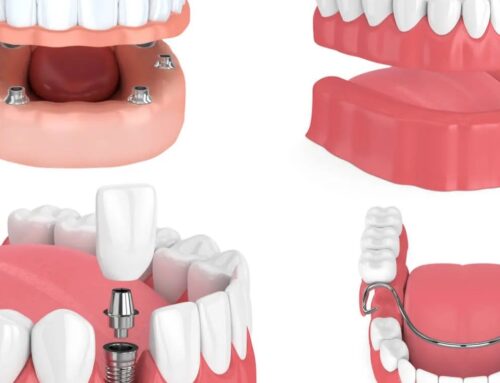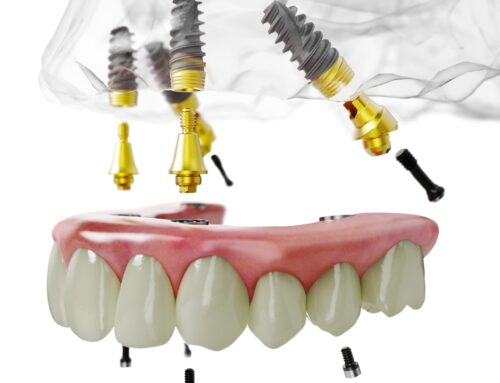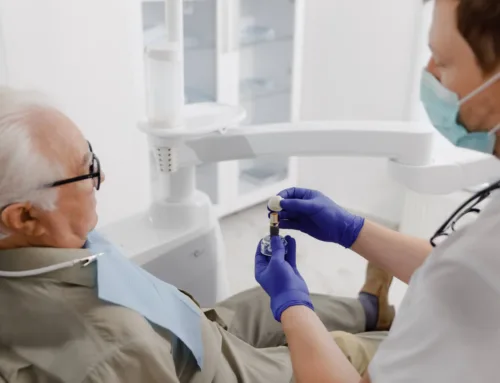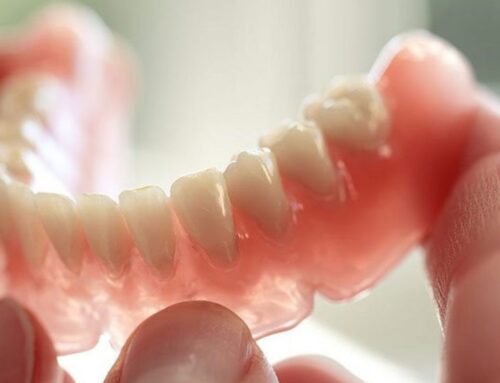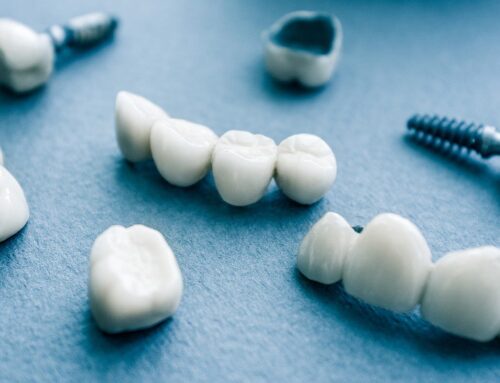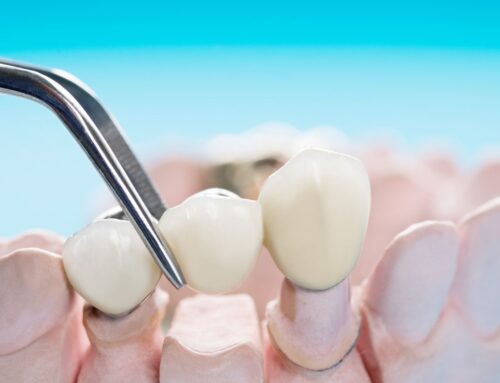Immediate Implant Placement and Delayed Implant Placement – Understanding the Difference
Missing teeth, when left untreated, can cause a variety of dental health issues. Having missing teeth can affect the ability to clearly communicate or chew easily, affecting your personal nutrition. Additionally, missing teeth can cause the jaw to weaken, contributing to the loss of bone density. Fortunately, there are two options for effectively treating missing teeth. Both approaches offer solutions for restoring a natural-looking smile and optimal oral function. Below, we’ll explore the key differences between immediate implant placement and delayed implant placement to help you make an informed decision.
What Is a Dental Implant?
A metal post made of titanium serves as an artificial root and is inserted into the jawbone, replacing the root of the natural tooth that was extracted. A connecting post also known as an abutment is attached to the post after the site has healed from the insertion of the implant. To this abutment, an artificial tooth, often referred to as a crown, is attached as a replacement for the original tooth. The crown is held securely in place by the implant.
Dental implants function like normal teeth, so they require brushing and flossing just like natural teeth. Also, as with natural teeth, regular dental check-ups are required to ensure the implants remain secure and functioning properly.
More details about the full process of placing dental implants and after-care requirements are available from the Canadian Dental Association.
Immediate Implant Placement
An immediate dental implant placement is often performed during the same appointment which a tooth, or multiple teeth, are extracted. One of the main benefits of immediate implant placement is that multiple appointments and/or procedures are not required. The entire process is able to be completed during a single appointment. This is a fast treatment option that replaces the extracted teeth immediately. Since the implant is placed immediately, the risk to the patient’s gums and jaw is mitigated, protecting the existing gum tissue and bone. New growth is then stimulated by the implant.
During the immediate dental implant placement, the implant is placed following the removal of the tooth, and a crown is placed onto the implant. The dental surgeon or orthodontist will take safety measures to manage both the hard and soft tissues during the tooth extraction and placement of the implant. This minimizes the trauma and keeps the site as healthy as possible, helping to support the stable placement of the implant and crown.
Benefits of Immediate Implant Placement
- Efficiency – Immediate implant placement streamlines the treatment process by combining tooth extraction and implant placement into one single appointment.
- Preservation of soft tissue and bone – Immediate implant placement helps preserve the surrounding bone and soft tissue architecture which contributes to better aesthetic outcomes and minimizes the need for additional bone grafting procedures.
- Patient Convenience – Getting your implant placed during your extraction appointment means you’ll only require one single appointment. This can be a huge benefit to those who live far from the office, have busy lives, or cannot take time off work.
- Immediate Results – In some cases, a temporary crown will be attached to the implant right after placement, allowing patients to have both a functional and aesthetically pleasing smile during the healing process. This is especially important for tooth implants that are visible when smiling or talking.
There are numerous benefits to immediate implant placement. However, it’s not an option for everyone. Certain factors may influence the feasibility of immediate implant placement, such as:
- Condition of the extraction site
- Infection or inflammation
- The need for additional bone grafting
- The need for soft tissue augmentation
Delayed Implant Placement
This option, as the name suggests, occurs once some time has passed after the extraction process. This can also occur if the teeth were lost outside of the orthodontist’s office due to trauma, injury, or serious illness/infection. The period between extraction and implant placement depends on the specific patient’s circumstances.
One of the main reasons to delay implant placement is that it allows for the extraction site to heal and therefore allows time for any issues related to gum tissue or bone in the area to be addressed and rectified. In some cases, other appointments and procedures will be required before the implant can be placed.
Ultimately, we need to ensure that the implant site is healthy and stable prior to the placement to ensure success.
Since the site is healed before implant placement, there is a lower chance of future infection than with immediate placement. Although the wait time is longer, the reduced risk of infection and increased stability result in a higher success rate for many.
Reasons a Delayed Implant Placement Can Be Favourable
- Healing time – There is typically a waiting period of several weeks to several months. This allows for the extraction site to heal completely, reducing infection and inflammation. This can also allow the regeneration of bone or soft tissue if needed.
- Bone grafting – In some cases, the extraction socket lacks bone volume or has undergone significant bone resorption. In these cases, bone grafting will need to be done before implantation to ensure success.
- Predictability – A delayed implant placement allows for a more controlled treatment process. This contributes to higher success rates and more favourable treatment outcomes.
- Infection management – If there is an existing infection, delayed implant placement is the preferred method as it allows for the resolution of any infections, reducing the risk of complications.
- Treatment planning – By delaying your implant placement, proper planning and assessment of the anatomical structures can be done. This comprehensive evaluation helps to ensure precise implant placement.
Delayed implant placement is the only dental implant option for patients who:
- are experiencing infections, gum disease, loss of bone density, or poor overall oral health.
- would normally be candidates for immediate implant placement but have weakened immune systems or underlying health issues.
- have any of the indicators that preclude them from immediate implant placement.
- lost their tooth or teeth from an accident, trauma, or impact.
What Happens During Delayed Implant Placement?
Because delayed dental implant placement can happen over a period of weeks or months and may involve multiple different appointments and procedures, the process is extended and more complex than with immediate dental implant placement.
The first procedure is to remove the tooth or teeth from the site. Following this, a period of time is allowed for the extraction site to heal. Time will also be allotted for any additional procedures and healing processes that are required to improve the health and stability of the gums and bone structure. This helps to ensure a successful implant placement and lowers the risk of any complications.
Some of these procedures may include:
- Bone graft surgery, which is recommended to increase bone mass in the jaw to properly hold and support a dental implant. An implant requires the same amount of bone mass for support as a regular tooth does. It’s the bone mass that supports teeth and gives required structure to the face. Some of this structure can be lost due to missing teeth, trauma, periodontal disease, infections, and/or other causes, and must be replaced to support an implant.
- Root canal.
- Prescribed antibiotics or other treatment to rectify infection.
- Treatments for gum disease and for any existing damage or trauma to soft tissues.
Once the required surgeries and procedures are completed and deemed to be successful, the implant placement process can begin. This includes:
- Placing the implant in the jawbone at the site of the missing tooth and allowing time to fuse with the bone.
- Covering the implant with the patient’s healthy, disease-free gums. Using the gum tissue to cover the otherwise exposed implant post prevents tongue irritation while the site heals, and keeps the site protected.
- Once the healing period has passed successfully, the gums covering the implant are moved to uncover the post, and the crown is then installed on a connecting post that attaches the crown to the implant.
How to Choose Between Immediate and Delayed Implant Placements
Ultimately, this decision will be made between the patient and their dental professional based on the circumstances. During a consultation, a patient can expect the following:
- A history will be taken of the patient’s oral health and overall medical background, which will be documented in the patient’s file.
- An oral exam will take place, during which images such as 3D scans and x-rays are taken, and the condition of the site for the implant is examined to determine its readiness for stable, successful implant placement.
- There will be a discussion about the procedure details, as well as the patient’s circumstances and preferences to determine the best course of action.
If left untreated, a variety of dental and other personal health issues can result from living with missing teeth. The solution to avoid these issues and retain full and proper tooth, mouth, and jaw function is to replace the missing teeth with dental implants. Innovations in implant treatment techniques and technology have resulted in patients enjoying quicker recovery times, higher success rates, and long-term improvements to their dental health, personal health and well-being.
The team at Georgian Dental is always ready and willing to discuss dental implants and which option is best for you. We offer no-obligation consultations to discuss the possible solutions and answer any questions you may have.
We want you to love your smile, so give us a call today to get started!
Appointment Request
If you’re interested in any of our procedures, and would like to meet with one of our dentists to discuss options, costs and get additional information, complete this short form and we’ll give you a call to arrange for a no-obligation appointment at our Barrie clinic.

